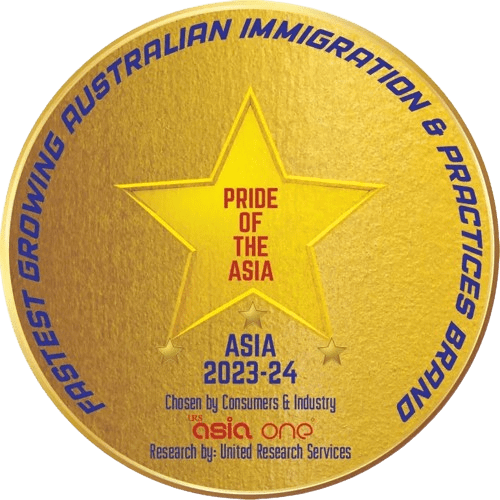Aussies absolutely love their coffee, and there is viable data to prove this! Australians are said to consume an average of 1.91kg of coffee per person per year. Also, the size of the Australian coffee market reached $6.2 billion in 2019. These are just a few statistics that prove the coffee culture surrounding Australian society. Ever since the Second World War, the coffee culture in Australia has evolved into a unique and cherished part of daily life. This blog will discuss everything about this culture – from its history to its present.
Bean There, Done That: Australia’s Coffee History
The interesting journey of coffee culture in Australia over numerous decades reflects the changing tastes and preferences of the Australian populace. Although coffee has a long history worldwide, the second half of the 20th century saw a significant increase in its broad acceptance in Australia.
- 1950s-1960s: The Introduction of Espresso
Espresso coffee first arrived in Australia in the years following World War II, mostly because of Italian and Greek immigrants who brought their love of strong, short black coffee with them. When espresso machines first appeared in cafes, they catered mostly to a small and niche market.
- 1970s-1980s: The Rise of Italian-Style Cafes
Australian coffee culture changed dramatically in the 1970s with the rise of Italian-style cafes. These cafés, often owned and run by families, began serving espresso-based beverages like lattes and cappuccinos. The idea of sipping coffee in a relaxed manner with loved ones started to catch on.
- 1990s: The Emergence of Specialty Coffee
The rise of specialty coffee in the 1990s marked a critical juncture in Australia’s coffee culture. Small independent roasters gained prominence as Australians started to develop a taste for freshly roasted, high-quality beans. Customers started to care more about their coffee’s origins and flavour profiles, and the emphasis slowly changed from quantity to quality.
- 2000s: The Third Wave Coffee Movement
The Third Wave Coffee Movement emerged in Australia all through the 2000s. From sourcing and roasting to brewing, this movement highlighted the artisanal elements of coffee production. Latte art evolved into a distinctive aspect of the coffee industry, and baristas were compared to artisans. Alternative brewing methods, pour-over processes, and single-origin coffees gained popularity among Australian coffee connoisseurs.
- 2010s-2020s: The Coffee Culture Boom
In the 2010s, Australia’s coffee culture took off and grew even more in the 2020s. Across the nation, specialty coffee shops and micro-roasters sprung up, providing a wide variety of coffee experiences. Cold brew, nitro coffee, and other inventive variations became popular among the Australian community.
In addition to the coffee itself, the environment of coffee shops became an important part of the experience. The idea of the “third place” – a social setting apart from the home and workplace, became popular. Cafes became social spaces, providing not only great coffee but also a warm environment for the community to interact, work, and unwind.
- Current Coffee Trends: Sustainability and Inclusivity
In light of the most recent advancements, inclusion and sustainability have gained importance in the Australian coffee industry. Because consumers are more aware of how coffee manufacturing affects the environment, there is a focus on sustainable processes, eco-friendly packaging, and beans obtained responsibly. Australian coffee culture has also evolved to be more welcoming, supporting a wide variety of brewing customs and accommodating different nutritional requirements, such as plant-based milk substitutes.
Melbourne: The Coffee Capital Down Under
Often hailed as Australia’s coffee capital, Melbourne is a testament to the nation’s brilliant coffee culture. Melbourne’s passion for coffee has turned the city into a global hub for coffee lovers, with its laneways and different neighbourhoods seamlessly integrating coffee culture.
The city of Melbourne is so passionate about coffee that it annually celebrates the bean through events such as Melbourne Coffee Week and the Melbourne International Coffee Expo (MICE), when roasters, baristas, and coffee lovers come together to share ideas, passion, and most importantly, coffee.
Melbourne’s reputation as Australia’s coffee capital is not merely a title but a reflection of a city that breathes, lives, and celebrates coffee in all its forms. As Melbourne continues to evolve, so does its coffee culture, ensuring that the city’s love affair with the bean remains an enduring and integral part of its identity.
Aussie-Presso: The Most and Least Popular Coffee Down Under
The flat white, cappuccino, and latte are the three main coffee beverages considered the best in Australia. Even though they all have the same ingredients—a single shot of espresso and steaming milk—each is a particularly beloved beverage in Australia.
While this trio graces every café menu nationwide, their popularity slightly differs from state to state. The latte officially claims the title of best-seller nationwide, yet Melbournians and residents of Victoria lean towards the cappuccino. Western Australia and Queensland, on the other hand, have a clear preference for the flat white.
And the least popular coffee recipe in the nation? The piccolo! It’s a little 100-ml glass with a ristretto shot within and a coating of warm, velvety milk on top.
Australia’s Coffee: The Cream of the Crop
In Australia, the emphasis on coffee transcends mere quantity; the emphasis on quality sets it apart as something truly special. Widely regarded as the best in the world, Australian coffee culture has created a unique identity distinguished by its commitment to excellence. Australia is the only country where international coffee titans like Starbucks faced difficulties that have forced them to scale back their operations because of the unmatched power and dominance of the local coffee industry.
Additionally, making coffee at home has become more popular in recent years, with many Australian families buying top-notch coffee makers, ranging from basic drip coffee makers to sophisticated espresso machines.
Conclusion: The Final Sip
As we sip the final chapter, let’s raise our cups to the baristas, the communities, and the enduring legacy of coffee in Australia. The conclusion of this journey is not an end but a continuation, marked by the aroma of freshly ground beans and the warmth of shared memories across the nation. Here’s to the ongoing love affair with coffee, Down Under and beyond














